English country lanes thread their way between old hedgerows, occasionally granting a glimpse of wary wildlife, like these nervous fallow deer, Dama dama, doe and fawn.:
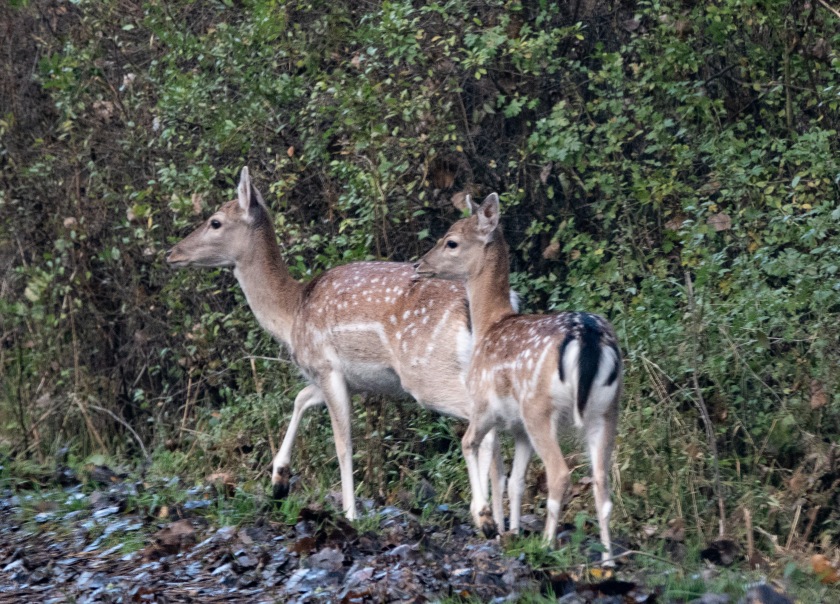
Every hedgerow is composed of a mix of different woody shrubs and vines, and at this time of year each has small jewels that reward our attention.
Purple sloes, fruits of the blackthorn, Prunus spinosa, and the key ingredient in sloe gin!
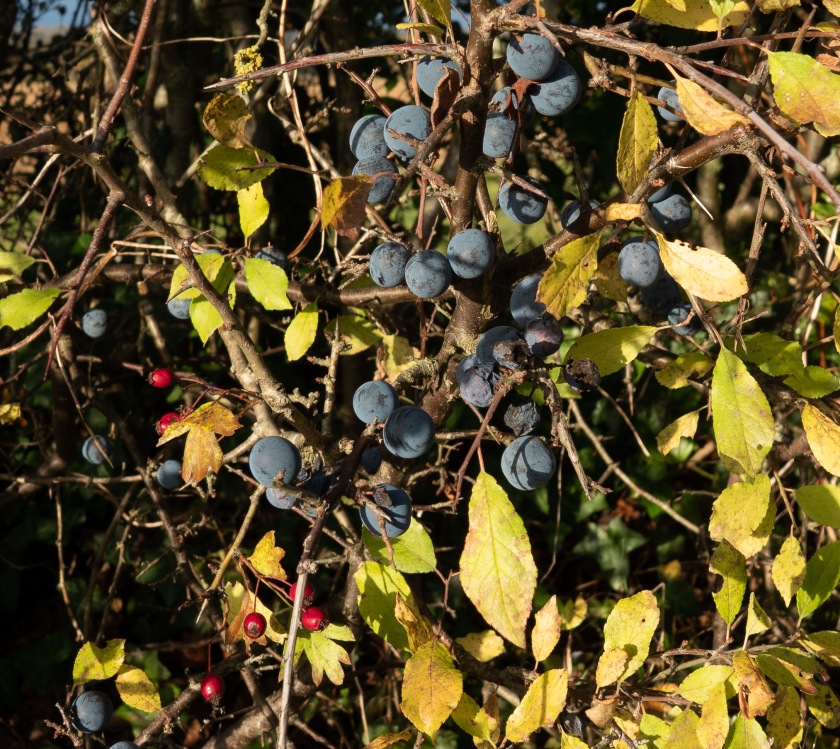
In the lower left corner, haws, fruit of the hawthorn, Crataegus monogyna. Both of these woody plants have fierce thorns, which like the African acacia make them perfect for a protective or enclosing hedge.
Black Bryony, Tamus communis, loops its poisonous garlands amongst the hawthorn twigs:
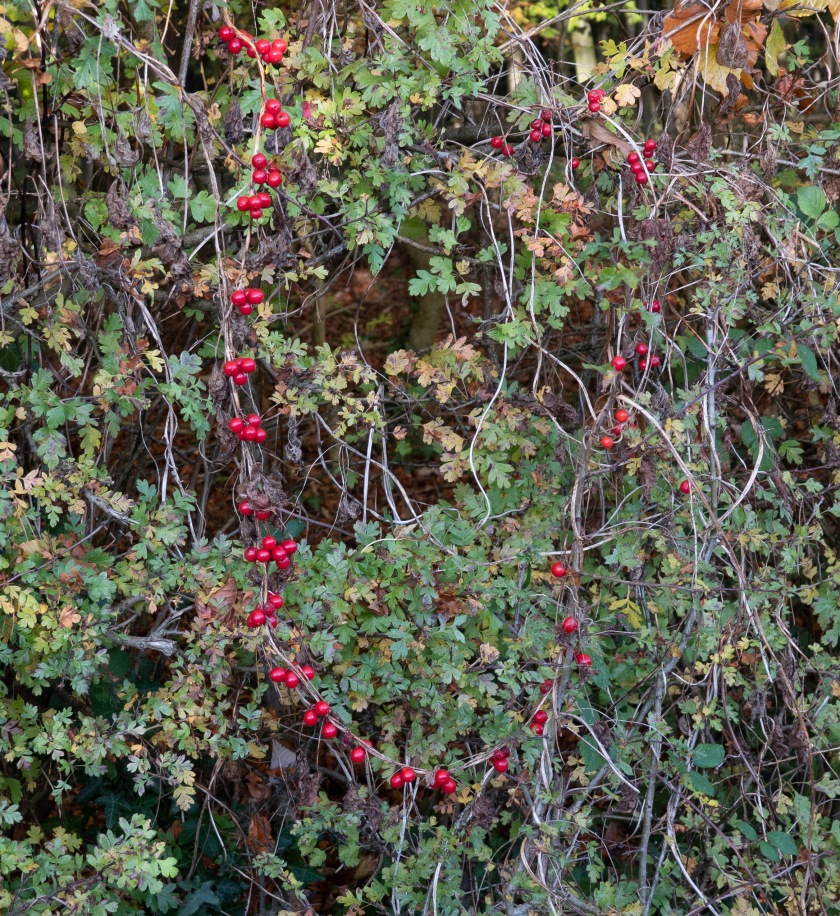
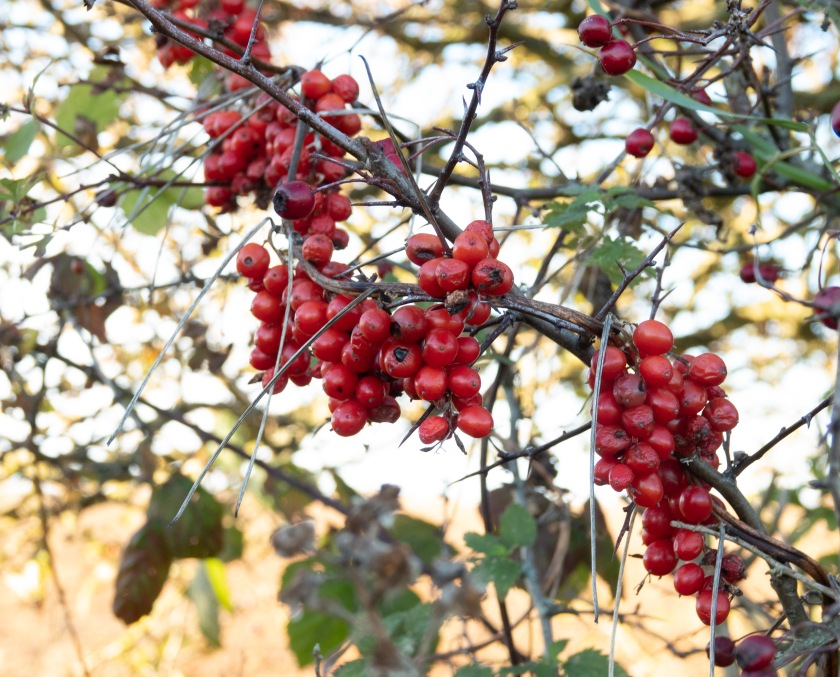
Old Man’s Beard is the common name of the native clematis, Clematis vitalba, and also rejoices in the name, Traveller’s Joy.
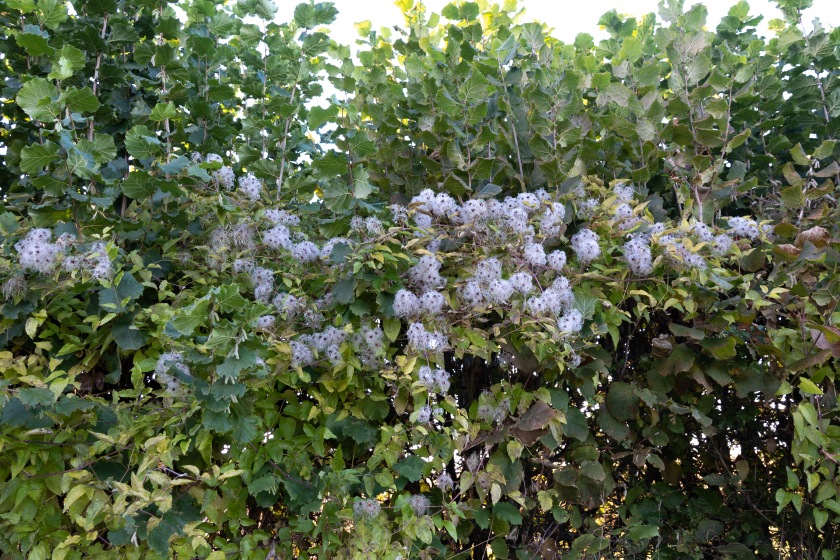
Look closer, and you see a cloud of seed heads:
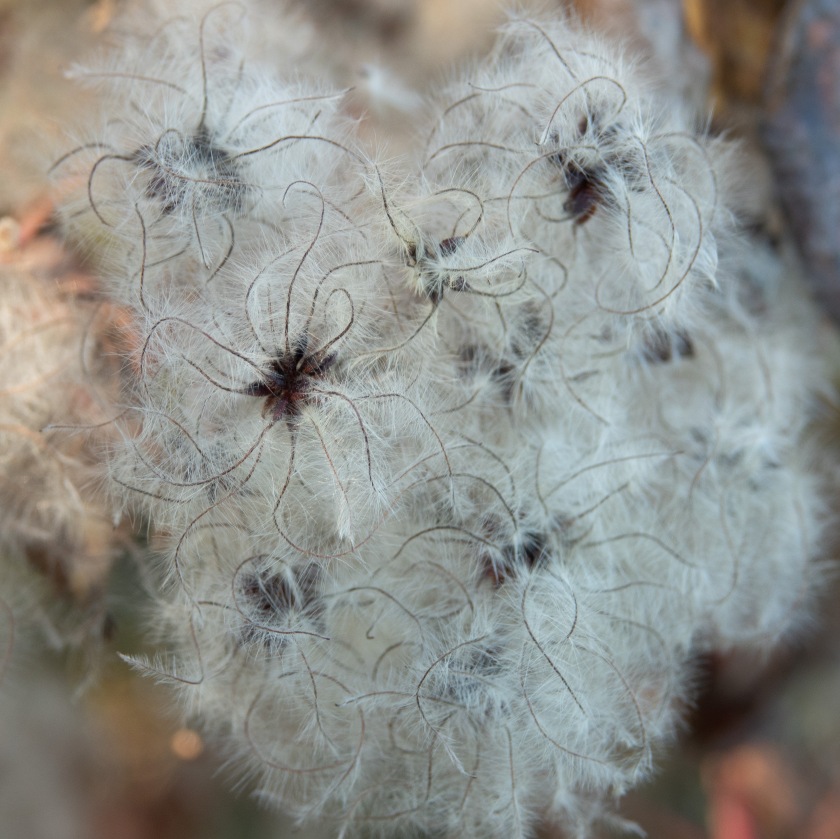
Against the sun, they glint like tinsel:

And each individual seed head is a small starburst:

The Dog Rose, Rosa canina, has blood-red pendant oval hips:
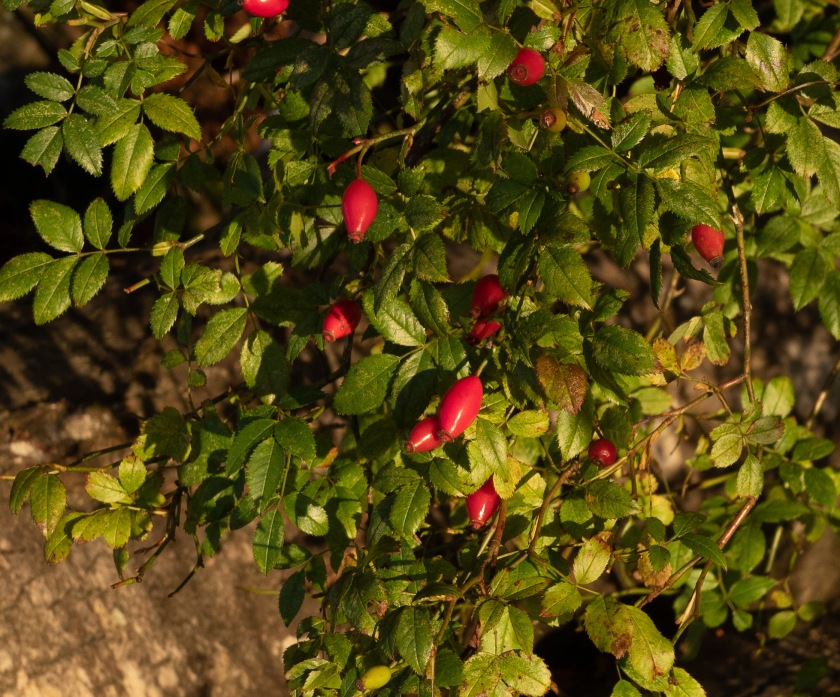
And there are harbingers of spring in the milky green catkins of the hazels:
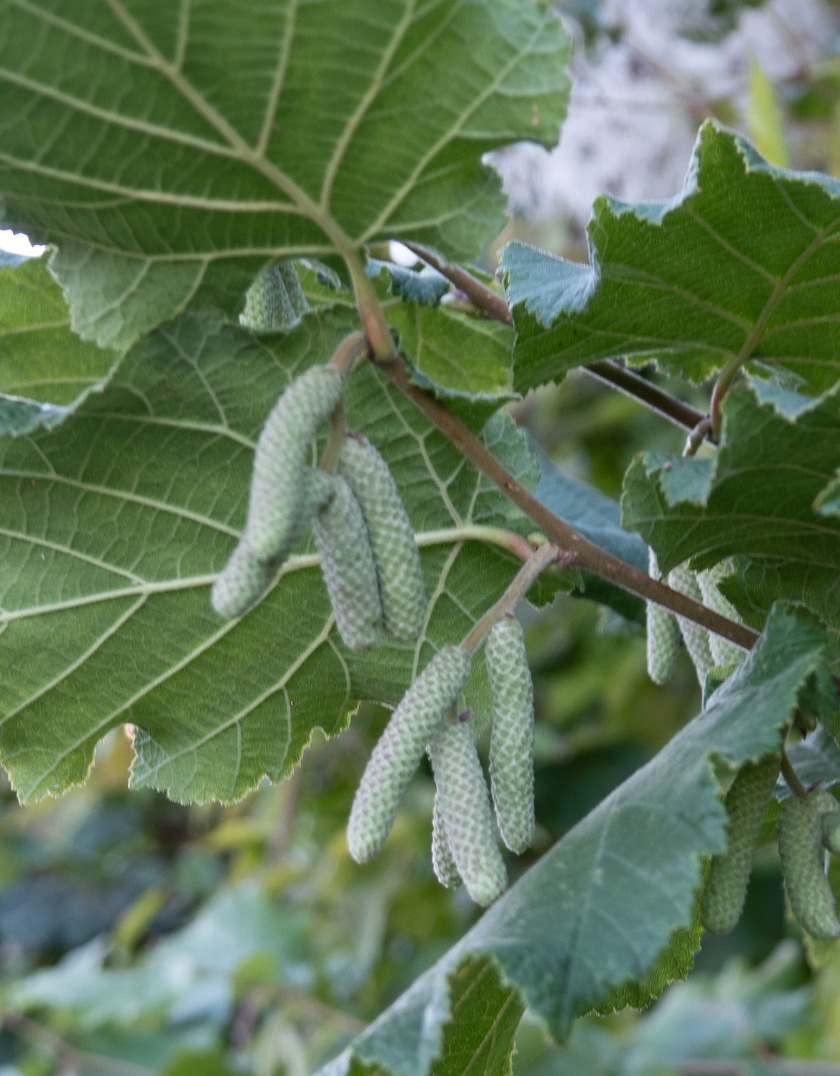
The catkins are the male flowers, and will turn yellow with pollen in the spring.
*To learn more about the traditional creation of a hedgerow, you can read about how to “lay” a hedge here:
https://en.wikipedia.org/wiki/Hedgelaying
Love the addition of learning about hedging. Pleaching, a favorite word! >
LikeLike
Lovely to see the poisonous weed that is Bryony so beautifully displayed! I do enjoy these posts. Thank you. Briony Bax Editor, Ambit Magazine www.ambitmagazine.co.uk Poetry Editor, The New Europeanwww.theneweuropean.co.uk
LikeLike